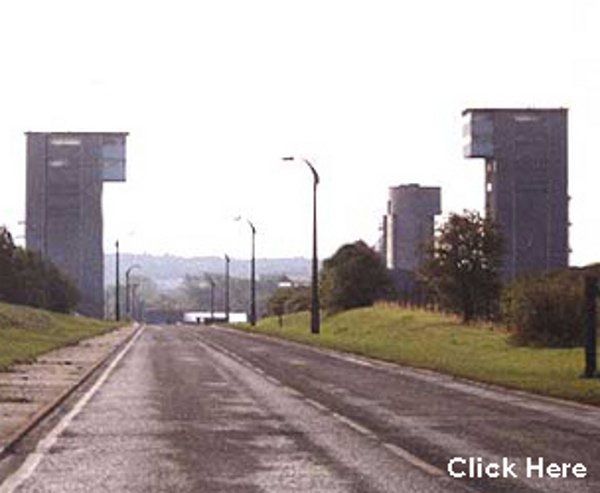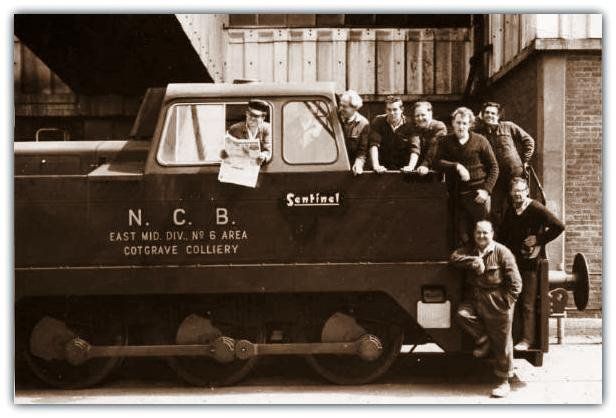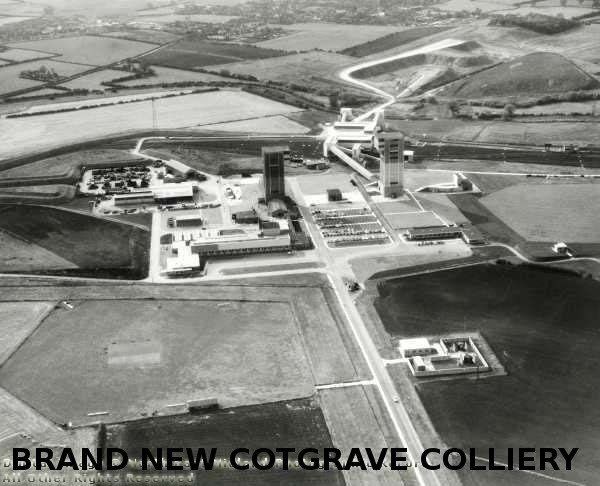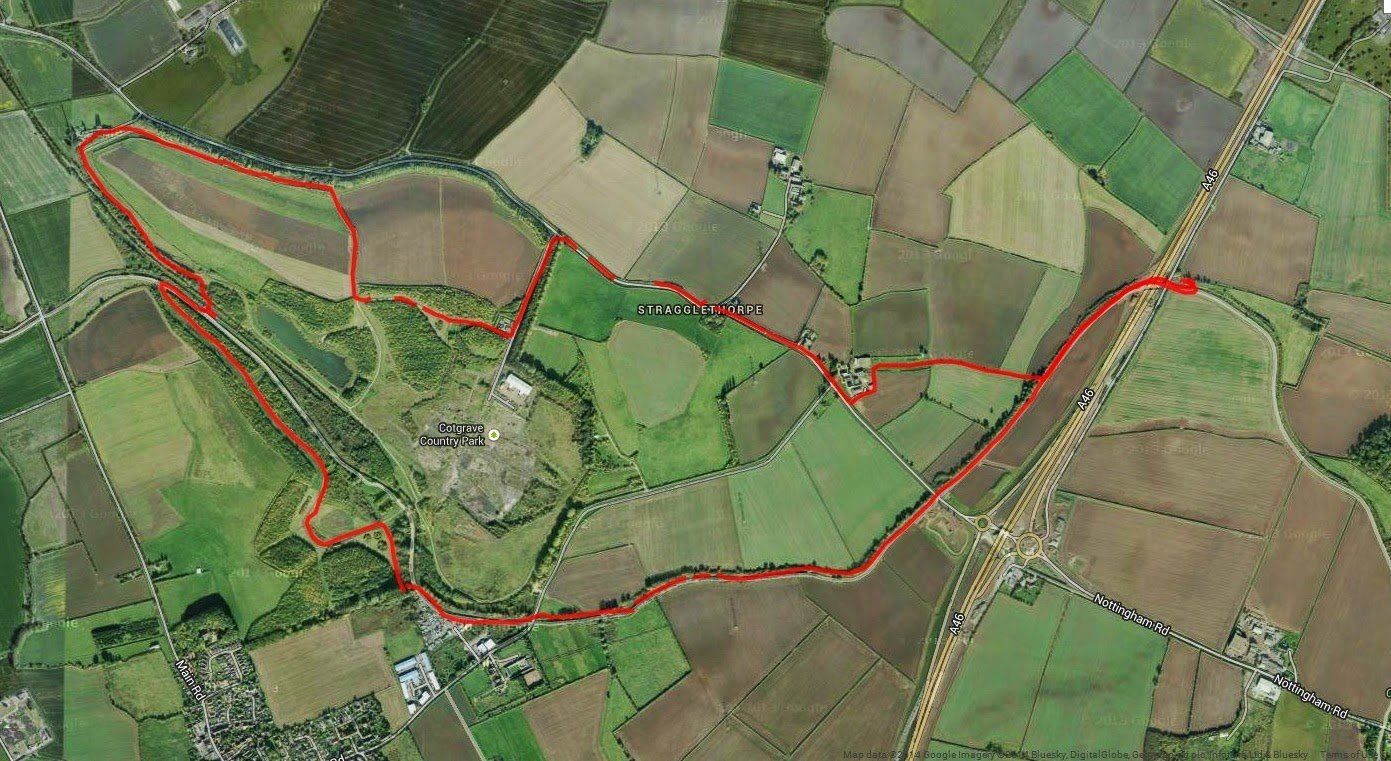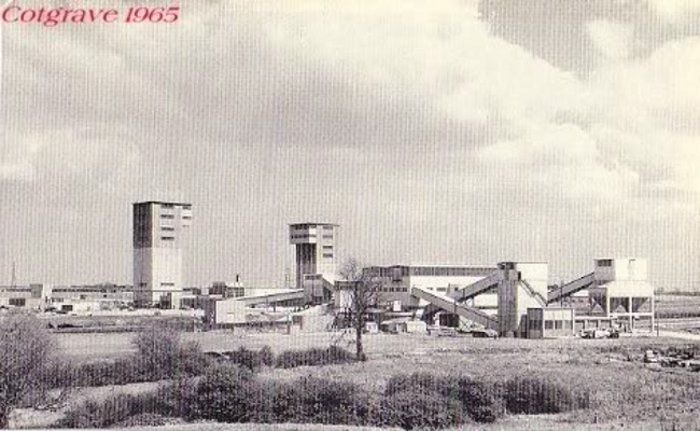Cotgrave Colliery History
Cotgrave Colliery History
The sinking of the mine, the effect on the village, closure.
The sinking of the mine, the effect on the village, closure.
Coal in the East Midlands
Coal in the East Midlands
Coal has been mined in the East Midlands since Roman times. Production peaked in 1913 at 287 million tonnes and, until the late 1960s, coal was the main source of energy produced in the UK. Ninety-five per cent of this came from roughly 1,334 deep-mines that were operational at the time, with the rest from around 92 surface mines.
Some exploration for coal near Cotgrave had been attempted since the early 1900's but none was discovered in the area until about 1950. Cotgrave Colliery was established in the early 1960s with large numbers of miners and their families being moved from other mining areas of England, especially the North East, to live on a large purpose-built housing estate. Initially, in 1962, around 500 experienced mining workers and their families, accepted the National Coal Board incentive of tied new houses complete with furnishings to move from the area of the recently closed Radford Mine on the north-west side of nearby Nottingham. Some four years later a similar scheme was introduced to attract miners from other worked-out mines in the North East of England. According to residents, special meetings were arranged so that workers already established could understand, for safety reasons, the dialect, and vice versa, of the newcomers. The population of the village rose from about 700 to over 5,000 within a few years. Many of the mineworkers who hailed from the North East stayed in Cotgrave, built homes and raised families and its not unusual to hear north east accents in the town. A branch railway was extended, complete with elevated viaduct, from Nottingham over the River Trent past Radcliffe on Trent to service the colliery. Coal taken from Cotgrave was taken by train to Ratcliffe on Soar power station to fuel the generation of electricity for a large proportion of th East Midlands.
The koepe towers at the pit head were considered very modern and distinctive compared with other pit-head winding gear towers. In a departure from traditional miners' working conditions, face workers had extensive modern changing and shower facilities, which meant they could leave as clean as they entered.
The local economy was devastated by the mine's closure in 1993–94, which caused much bitterness. Like most Nottinghamshire mines, Cotgrave had continued working through the National Union of Mineworkers-declared 1984–85 miners' strike. On its closure, it was reported that the seams had millions of tons of coal reserves but these were of insufficient quality. Local residents, however, recount that the mine was shut because of geological faults, the encounter of a subterranean stream and subsequent flood problems, and the growing remoteness of the seam face from the shaft, which drastically increased the cost of bringing the coal to the surface. The shafts were filled with concrete on closure and all associated buildings demolished.
Today
By the 1990's the site showed little evidence that a colliery has occupied the area. The imediate vicinity of the pit head was fenced off for safety reasons and much of the surrounding area was given over to create Cotgrave Country Park.

